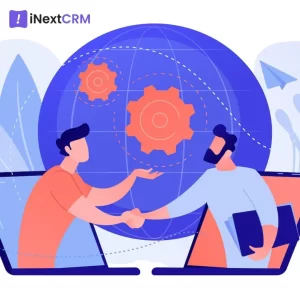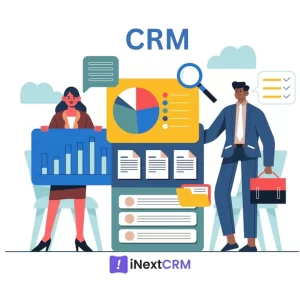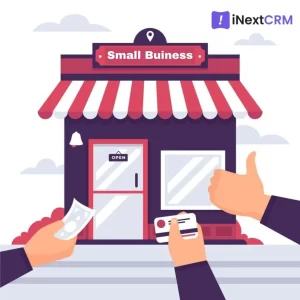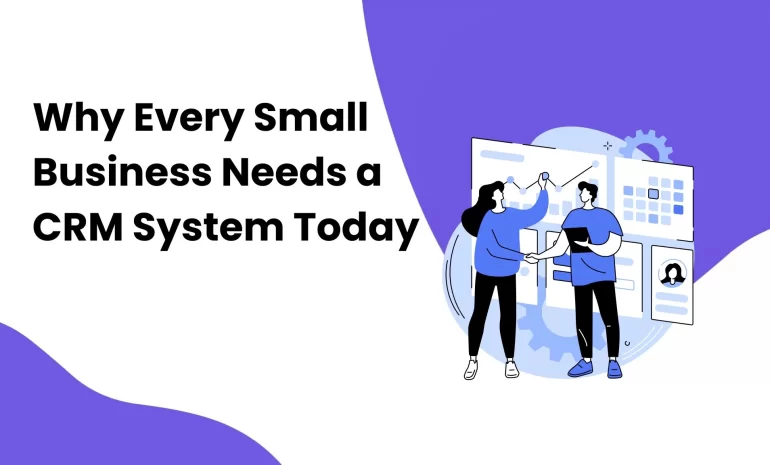Competition has become stiff and this means that the small business needs to utilize all available resources to stand a better chance in the competitive market. One of the most effective remedies is inclusive of overall Customer Relationship Management (CRM) systems. The incorporation of small business CRM makes it easier for businesses to gain essential data about their customers to increase satisfaction and loyalty hence promoting revenue growth. In this article, the author discusses how business can elevate connection with customers through CRMs.
Introduction of Small Business CRM
CRM stands for customer relationship management, and it is an application or a set of technology tools that manage your relationships with existing and prospective buyers. An effective CRM system is especially important for small businesses. It accumulates the customer information, records communication and organises tasks, thereby enhancing customer relationship. iNextCRM, the provider that is on the forefront in this area, has a solution with all the necessary features for SMB.

Benefits of a Small Business CRM: Revealing Everywhere Customer Possibility
1.Enhanced Customer Insights:
The decision making process perhaps the biggest advantage of using a CRM in a small business setting is the opportunity to learn more about your customers. In a CRM, all the customer details are available at one central site resulting in easy access and data analysis. It relates to information such as the customer’s telephone number, address, the record of his or her purchases, and interaction with the firm. From such data, you can be in a position to follow the trends and in the process develop strategies based on your client’s behavior patterns.
2. Improved Customer Engagement:
Cultivating and Sustaining Positive Client Relations Small business CRM can make a huge difference in the overall effectiveness of customer relations due to its ability to provide useful tools and features for the companies to use to communicate and interact with the customers.
3. Personalized Communication:
Another advantage of using a CRM system is that the customers can be divided into groups, according to different factors or criteria, including age and gender, previous and current buying habits, and general behavior. This means, this segmentation helps you target every or specific segments with messages and offers which they are likely to respond to, hence high engagement rate.
4. Automated Follow-Ups:
The follow-up communications can be programmed, so that no customer communication, including inquiries or interactions, are neglected. It is an efficient and timely approach of communication that ensures customers are engaged and develop trust in the business.
5. Customer Journey Tracking:
By integrating a CRM, you can follow all the interactions that a client has with your business, from the first approach to the purchasing process or even after the purchase, providing customer service. It gives a broad perspective by which one is able to think through the areas in which one feels and can facilitate the thriving of the customer touchpoint.
6. Social Media Integration:
A current example of CRM systems that support social media is iNextCRM, or you may interact with customers through the social media they use. This integration enables you to keep abreast with the customers, as well as respond to his or her questions and opinions as they are being posted.
Empowering Switch: Taking Control of Your Customer Relationships

Here’s a step-by-step guide to implementing a small business CRM:
1. Identify Your Needs: When selecting a CRM, it is necessary to analyze the needs and goals of your company to determine its future requirements. Based on intended business goals, decide on the tasks that you really want your CRM to solve, whether these are customer service issues, sales objectives or marketing goals.
2. Choose the Right CRM: Choose your CRM keeping in mind the functionality that you require for the business and the costs that you are comfortable paying for it. iNextCRM, for instance, aims at small businesses and presents basic features without too much depth of setting options.
3. Data Migration: Migrate all the data from the current CRM tool to the new CRM tool. There should be little or no problems with the data as it is transferred to ensure that the new system providing accurate data.
4. Train Your Team: Accustom your staff to the CRM to ensure that they understand how to utilize it efficiently. This includes the features of the system and how to enter data as well as how to use the CRM for marketing and customer relations.
5. Integrate with Existing Systems: Make sure that the CRM can easily interface with the structures that you already have in place, including programs for email marketing, social networks, and online stores. Integration helps to improve the movement of data and the automation of operations.
6. Monitor and Optimize: It is critical to track the impact of the CRM and also take feedbacks from the employees sometimes. Utilize these externals feedback more systematically to enhance processes and where there is a necessity, modify must to enhance the overall effectiveness of the CRM.
7. Measuring the Impact of a Small Business CRM: Yielding to the temptation of measuring success by the impact of small business CRM as we embrace change and seek to quantify success, there is a conflict of interest here because quantifiable results have their own merits that cannot be ignored.

Measuring the Value Proposition on Account of Stronger Customer Relations
- Customer Retention Rate: A higher retention rate implies that customers are happy to make continuous patronage to your business.
- Customer Lifetime Value (CLV): It refers to the total value of the sales a business entity can make to a given customer throughout their relationship. Customer engagement and loyalty are significantly achieved if Customer Lifetime Value (CLV) is high.
- Conversion Rates: The rate at which leads are converted to customers should also be monitored. CRM should aid in raising these rates through the insights and communication that such a tool can offer.
Customer Satisfaction Scores (CSAT): It is recommended to conduct surveys of your customers as often as possible in order to assess their level of satisfaction. A higher CSAT score is a good sign and indicates that customers are happy and actively participating.
- Engagement Metrics: Measurable indicators like the number of times an email is opened, clicked, liked or commented on should be tracked. These give you an overview of whether your communication strategies are effective or not.
Conclusion:
This creates the need for companies to build stronger and more sustainable customer relations. Adopting iNextCRM as a small business CRM is a turning point towards success that you should not miss. Overall, customer data that is gained through a CRM assists in customer satisfaction and ultimately helps increase your overall revenue. It’s wise for any business owner to consider getting a CRM as it is a tool that helps a business grow and become more successful in the long-run. Competition is always tight in the small business environment and that is why it is important to recognize and interact with the customers. A small business CRM provides this in a way that is useful to accomplish that, which is why it is such a valuable asset towards making a business successful in today’s environment.


